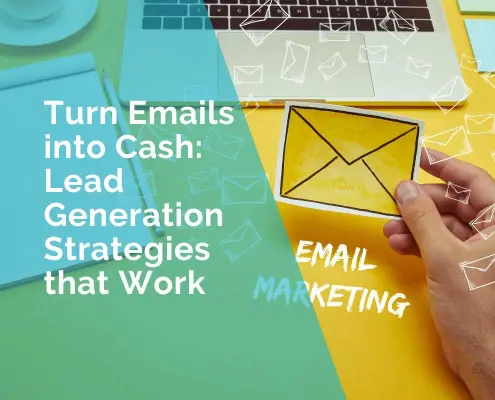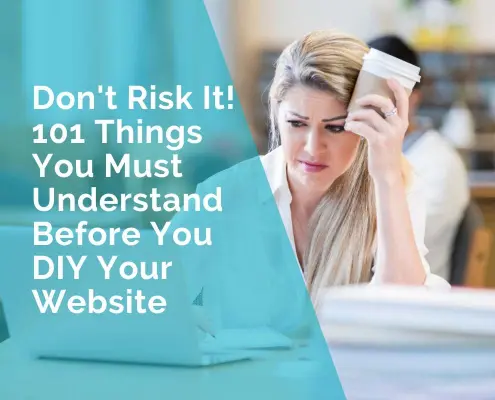7 Steps to Take If Your Marketing Strategy is Not Working
Marketing is the lifeblood of every successful company, no matter the industry. An organization’s revenue stream depends on the continual influx of quality leads generated by quality marketing.
Not all marketing efforts will yield the same results, and you never know how it will turn out until you try it. Unfortunately, sometimes businesses waste a lot of money on marketing that doesn’t pay off.
One of the great things about marketing is that you can easily change directions if something isn’t working. Here we will discuss the steps to take if your marketing strategy is not bringing you results.
Just What Is a Marketing Strategy?
Let’s begin by defining what we mean when discussing marketing strategies. It seems simple at first glance; a plan for directing your marketing and sales efforts. However, the notion is a bit more nuanced than that. You can look at a marketing strategy as a company’s game plan for engaging potential consumers and converting them into clients.
Getting your business in front of the individuals likely to purchase from you requires careful strategic planning. This involves much thought, investigation, and planning, especially if you are a startup.
The success of your organization will depend on your ability to produce a steady stream of qualified leads that you can convert into paying customers.
Why Is It Crucial To Have a Well-developed Marketing Strategy?
When businesses expand and take on more customers, they can lose sight of the bigger picture. A well-developed marketing strategy, however, will help avoid this problem by ensuring that your company is always prepared to take advantage of new opportunities. That means if your strategy stops working, you need to make some modifications.
1. Redefine Your Goals
First, you need to know the goals of your marketing efforts front-to-back. Goals are the backbone of any marketing effort. If your marketing approach worked initially but stopped being effective, you should evaluate whether you have attained your starting goals.
The goalposts may have shifted even if you haven’t achieved your objectives. In this situation, the best thing to do is to set new goals. Additionally, you must ensure that your goals are clear and straightforward. Establishing specific, attainable, and time-bound objectives are essential to your campaign’s success.
The vast majority of marketers confuse wants with needs. Most marketers’ campaigns are guided by aspirational statements like “I want to grow my sales,” which are ultimately unachievable.
You should be more precise by defining your goals, such as, “I want to increase my income 2X in 3 months.” The statement gives a clear definition of the growth rate and time frame. You’ll be able to better allocate your resources and fine-tune your strategy with a well-defined objective like this in mind.
2. Modify Your Customer Persona
As a startup, you can’t build relationships with prospective clients if you don’t know who they are. Furthermore, if you don’t know who your audience is, it will be much harder to segment and engage them.
While customer relationship management systems (CRMs) and other software can help you engage your audience, success will ultimately depend on how well you know that audience.
Creating a customer persona shouldn’t be difficult, particularly for online enterprises. Considering that customers provide personal information throughout the buying process, you should be able to follow the changes happening to your customer base.
Being aware of your persona enables you to:
- Increase your adverts’ assertiveness while attempting to reach specific audiences;
- Fine-tune your ads;
- Optimize for naturally engaging content;
- Nurture your leads in email marketing initiatives.
3. Make Use of Social Media
In this day and age, you have no choice but to engage with social media. You may think that social media is not suitable for your brand, but in all likelihood, that’s not the case.
In reality, nearly every company can benefit from using social media in some capacity. A lot of companies have gotten their start because of social media. When you first start, it may seem overwhelming. However, once you get going, sharing content on social media will become second nature. That being said, if you don’t think you have the know-how to make social media work for your brand, you could consider hiring a social media manager.
With that said, it doesn’t have to take a lot of time to interact with potential clients on social media. Whether it’s information about you and your company or general knowledge about your field, you should post everything you think your audience will find interesting and valuable. Furthermore, engaging with potential clients via comments and direct messages on Instagram, Snapchat, and Twitter are a great way to connect with other thriving companies and reach out to prospective customers.
4. Use Influencer Marketing
While on social media, we should also mention the power of social media influencers. Want to get the word out and increase your profile without having to wait years to create a following on social media? If so, you should most definitely use influencers to your advantage.
The challenge, though, is identifying the most suitable influencers. You don’t need to choose people who have amassed millions of fans to be influential. You might go for micro-influencers with tens of thousands or perhaps a hundred thousand followers, however it is important to identify the proper influencers in your field to reach your desired demographic
Reaching your target audience is essential. If you do it well, you may reach a huge audience for very little cash outlay, considering the possible return on investment.
If you already have a proven conversion strategy and want to increase exposure, this may be your best marketing approach. Determine the current state of affairs, then contact key influencers to get a sense of their pricing. Start small, see what works, then expand.
5. Take a Look at Your Competitors
It’s easy to believe that keeping tabs on the competition is a waste of time if your business is still in its early stages. However, this shouldn’t prevent you from monitoring them to see what they’re doing right. That will provide you with valuable information to help you if a marketing strategy is not working.
You can use their websites as your starting point and see which social media platforms they use and what their followers think of their posts. The key is finding out what makes them successful and how to incorporate some of their tactics into your strategy. Other things that you can learn from them are:
- How well their advertisements were received by their customers.
- Their rate of growth.
- How much they invest in their marketing efforts.
- What they did to recover from past marketing failures.
Some firms provide reports and analyses that include some of this information regularly.
6. Make SEO an Important Element of Your Marketing Strategy
When it comes to digital marketing, there is nothing better than search engine optimization. Unfortunately, many entrepreurs ignore it, because it seems too difficult. If your marketing strategy is not working, it is most likely because you are not implementing enough SEO.
The potential of SEO is something that you should not underestimate, no matter how large your marketing budget is. The possibilities are endless if you understand how to make the most of it and master proper SEO techniques. That being said, effort and time are essential to succeed in SEO. You need to be diligent, and you need to be patient. Additionally, you need to know how to utilize SEO properly.
For instance, one of the biggest SEO mistakes is overusing keywords. That is a common blunder that many business owners make. They think more people will notice their content online if they can target certain keywords. In reality, using specific keywords can do more harm than good. It’s best to focus on long-tail keywords instead. Long-tail keywords tend to be less competitive than short keywords. They also have a higher search volume, meaning more users will see your content using a search engine.
7. Give It Some More Time
Being patient is the last of the steps to take if your marketing strategy is not working. Even though it may be difficult initially, you should be willing to hang in there for a while. If what you’re doing isn’t working, sometimes all you need to do is wait a bit longer. Some marketing efforts take time, and it’s always darkest, just before dawn. Therefore, it’s essential to avoid making hasty decisions. It would be best if you gave the new strategy a chance to work before making any drastic changes to your approach.
***
by JP Office












